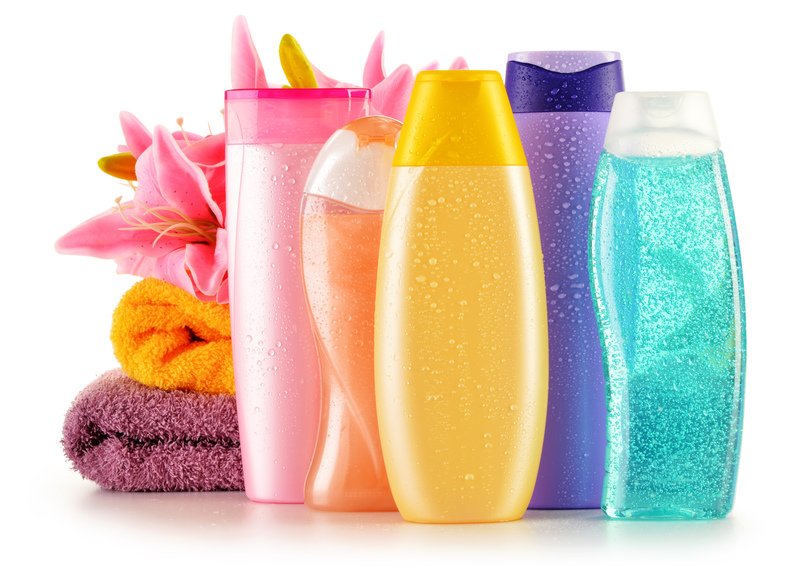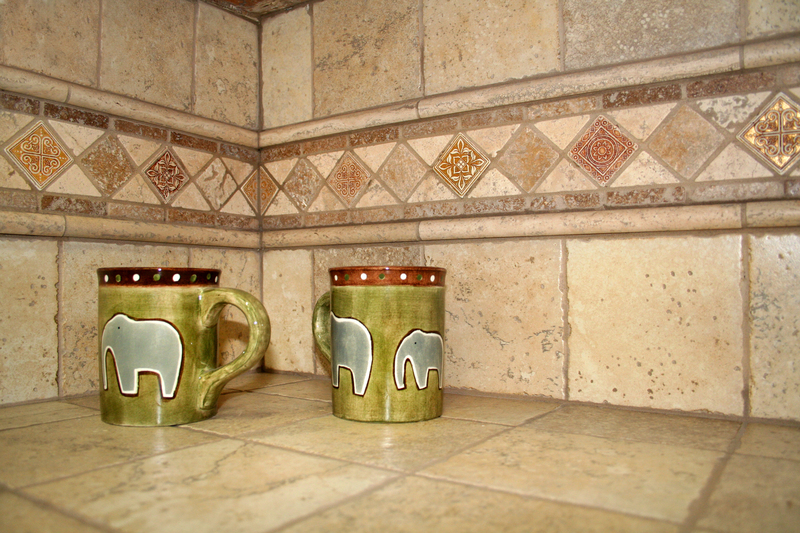Decoding the Science of Velvet Curtain Cleaning Excellence
Posted on 23/06/2025
Decoding the Science of Velvet Curtain Cleaning Excellence
Velvet curtains are synonymous with elegance and luxury, gracing many homes, theatres, and high-end establishments. Yet, their majestically soft piles and rich textures can become a magnet for dust, dirt, and upholstery stains. Achieving velvet curtain cleaning excellence is not just about maintaining their opulent appearance but also ensuring longevity and hygiene. This comprehensive guide dives into the science behind preserving your velvet drapes and reveals the best practices, safe techniques, and expert insights for cleaning velvet curtains to perfection.

Understanding Velvet: The Foundation for Effective Curtain Cleaning
Before delving into how to clean velvet curtains, it is crucial to understand their unique structure and fabric composition.
The Science Behind Velvet Fabric
- Fiber Content: Traditional velvet is woven from silk. However, modern variations use cotton, polyester, rayon, or blends.
- Unique Pile: Velvet is characterized by its dense pile, created by weaving two thicknesses of fabric together before cutting them apart, resulting in a plush, short pile on the surface.
- Luxurious Texture: This pile can easily trap dirt and is sensitive to pressure, moisture, and certain cleaning agents.
This delicate construction means that improper cleaning methods can crush or obscure the pile, create water stains, or even damage the fabric itself. Therefore, understanding the science of cleaning velvet curtains is essential to avoid irreversible harm.
Why Velvet Curtains Require Specialized Cleaning
From the theatre stage to your living room, velvet drapes represent a significant style investment. Here's why standard cleaning doesn't cut it:
- Dirt and Dust Accumulation: The dense fibers of velvet can accumulate more dust and allergens than other fabrics.
- Moisture Sensitivity: Velvet reacts to water, potentially causing spots, shrinking, or flattening of the pile.
- Color Fading: Incorrect use of cleaning solutions may lead to color loss or streaking.
- Pile Distortion: Aggressive scrubbing or the wrong tools can mat or crush the pile.
To ensure your velvet curtain cleaning is truly excellent, special attention must be paid to both the fabric's structure and the potential risks mentioned above.
Best Practices for Velvet Curtain Maintenance
Regular maintenance plays a vital role in reducing the need for frequent deep cleans. Here are science-based guidelines for maintaining velvet curtains:
1. Regular Dusting and Vacuuming
- Use a vacuum cleaner with a soft brush attachment to gently remove surface dust.
- Always vacuum in the direction of the pile to prevent matting.
- For high-traffic areas, consider weekly light vacuuming to prevent particulate buildup.
2. Brushing
- Employ a soft-bristled upholstery brush specifically designed for velvet.
- Brush lightly to lift the pile and remove trapped dust or pet hair.
- Brushing also rejuvenates the fabric's luster and helps maintain its plush appearance.
3. Strategic Placement
- Avoid positioning velvet curtains in direct sunlight to minimize fading.
- Keep away from moisture-prone areas like bathrooms to reduce the risk of mold.
Deep Cleaning Velvet Curtains: Decoding the Process
When basic maintenance isn't enough, a thorough cleaning is in order. Achieving velvet curtain cleaning excellence involves methodical planning, testing, and meticulous execution.
Step-by-Step Scientific Approach
-
Curtain Inspection and Label Reading
- Identify the fiber content (e.g., silk, cotton, polyester).
- Check for manufacturer's care instructions on the label. Some velvets are strictly dry clean only.
-
Testing for Colorfastness
- Before using any cleaning agent, test a hidden area.
- Dab with a slightly damp white cloth and watch for color transfer.
-
Choosing a Cleaning Method:
- Dry Cleaning: Preferred for pure silk or high-end cotton velvet and labeled "dry clean only".
- Hand Washing: Feasible for washable synthetic velvets; use cold water and mild detergent.
- Spot Cleaning: Ideal for local stains on all velvet types, using minimal liquid.
-
Executing the Cleaning:
- For Dry Cleaning: Take to a reputable professional familiar with luxury fabrics.
-
For Hand Washing:
- Fill a tub or sink with cool water and mild, non-alkaline detergent.
- Submerge the curtain and gently agitate, avoiding twisting or wringing.
- Rinse thoroughly with cold water until free of soap.
-
For Spot Cleaning:
- Blot (do not rub) stains with a clean, damp cloth and a solution of water and gentle detergent.
- Absorb excess moisture with a dry white towel.
-
Drying Velvet Curtains:
- Lay flat on a thick towel in a well-ventilated area.
- Avoid hanging while wet to prevent stretching the fabric out of shape.
- Keep away from direct heat and sunlight during the drying process.
-
Finishing Touches:
- Once dry, use a velvet brush to gently revive the pile.
- If needed, steam lightly at low temperature to remove creases (never iron directly).
The Science of Stain Removal on Velvet Curtains
Velvet curtain stain removal requires an understanding of chemistry and fabric sensitivity. The key is to act quickly:
- Liquid Stains (Wine, Coffee, Juice): Blot gently to absorb as much as possible. Apply a mixture of water and white vinegar (50:50) with a clean cloth. Blot again with plain water to rinse.
- Oil-Based Stains (Butter, Grease): Sprinkle absorbent powder (cornstarch or baking soda) over the stain, let sit for 30 minutes, then brush away and treat with a mild detergent solution.
- Protein Stains (Egg, Blood): Use cold water and an enzyme-based cleaner, gently blotting to remove residue.
Key Principle: Never rub or scrub--this can damage the pile and spread the stain.
Professional Velvet Curtain Cleaning: When to Call an Expert
For precious or antique velvet drapes, or for curtains covering a large area, hiring professional velvet curtain cleaning services is often the wisest choice. Here are some expert advantages:
- Specialist Equipment: Professionals use low-moisture cleaning systems to preserve the velvet's texture.
- Fiber Identification: Experts can correctly identify velvet types and select optimal cleaning solutions.
- Safe Drying Techniques: Commercial air-movers and flat drying setups minimize pile disturbance.
- Stain Mastery: Access to advanced, fabric-safe stain removers ensures better results.
Common Velvet Curtain Cleaning Mistakes to Avoid
Maintaining velvet curtain cleaning excellence involves steering clear of these common pitfalls:
- Excessive Water Use: Soaking can cause water stains, shrinkage, and loss of shape.
- Incorrect Detergents: Harsh chemicals or alkaline detergents degrade fibers and fade colors.
- Heat Exposure: Direct ironing or machine drying flattens the pile permanently.
- Skipping the Test Patch: Not testing cleaners in an inconspicuous area can lead to visible damage.
- Rough Handling: Wringing, scrubbing, or aggressive vacuuming causes matting and wear.
DIY Velvet Curtain Cleaning Products That Really Work
For those looking for safe and effective homemade velvet curtain cleaners, consider these gentle solutions:
- Mild Detergent Solution: Mix one teaspoon of a gentle, dye-free liquid laundry detergent in one liter of cold water.
- White Vinegar Mix: For deodorizing and mild stain removal, combine one part white vinegar with two parts water.
- Baking Soda Paste: For greasy stains, blend baking soda with water to a paste, apply, let dry, then brush off.
- Commercial Velvet Cleaners: Opt for products labeled as "velvet-safe" or consult a fabric care professional.
Note: Always perform a spot test before full application.
The Role of Fabric Protection in Curtain Cleaning Excellence
After cleaning, enhance your curtains' lifespan by applying a fabric conditioner or protective spray designed for velvet:
- Helps repel future stains and dust accumulation.
- Makes spot cleaning easier and reduces wear.
- Consult manufacturer's recommendations before application.

Frequently Asked Questions: Science of Cleaning Velvet Curtains
Can I machine wash velvet curtains?
Most genuine silk and cotton velvets are not machine washable. Some polyester velvets may tolerate gentle cycles, but machine washing is generally not recommended due to risk of pile crushing and shrinkage. Always check the care label.
How often should velvet curtains be cleaned?
Routine dusting and vacuuming can be done weekly or bi-weekly, while deep cleaning should be performed every 1-2 years, depending on exposure and environmental factors.
What tools are essential for maintaining velvet curtains?
A soft-bristled upholstery brush, vacuum cleaner with a brush attachment, clean white towels, and a gentle cleaning solution make up your core kit for maintaining velvet curtain cleaning excellence.
Conclusion: Achieving Velvet Curtain Cleaning Excellence
The art and science of velvet curtain cleaning require a thoughtful approach rooted in understanding the fabric's chemistry and physical structure. By following the science-backed tips and avoiding common pitfalls outlined in this guide, you'll ensure your velvet drapes remain stunning for years to come. Whether opting for professional services or DIY care, curtain cleaning excellence is about preserving both the beauty and integrity of your cherished velvet.
Ready to experience impeccable, plush curtains every day? Commit to routine velvet curtain care, and enjoy the luxurious ambiance they add to your space, cleaned to scientific perfection.




